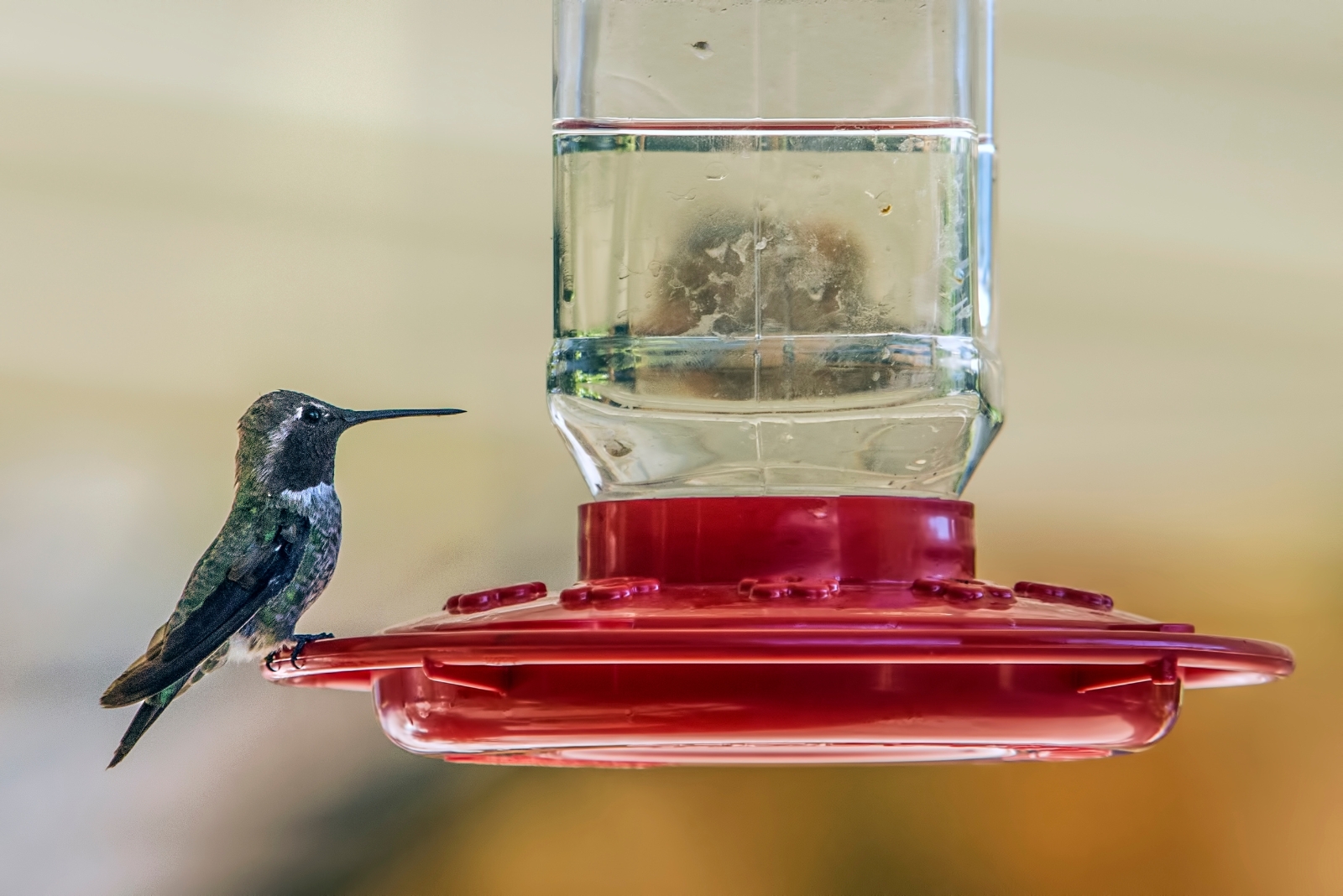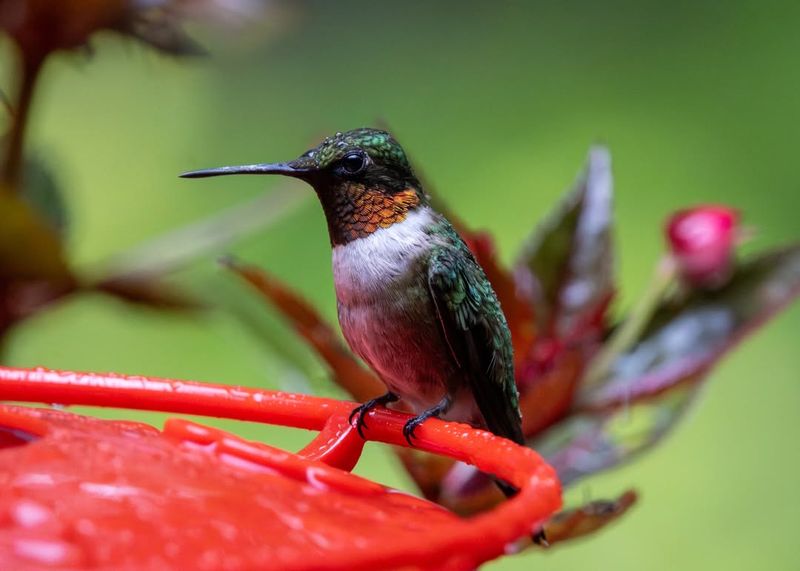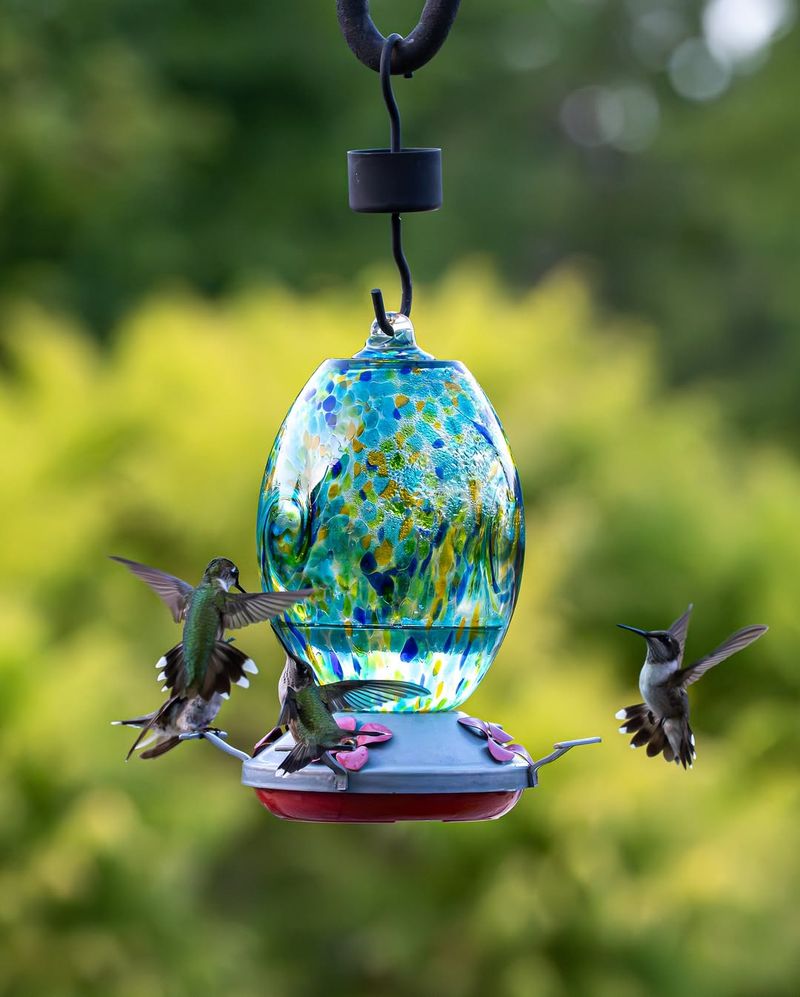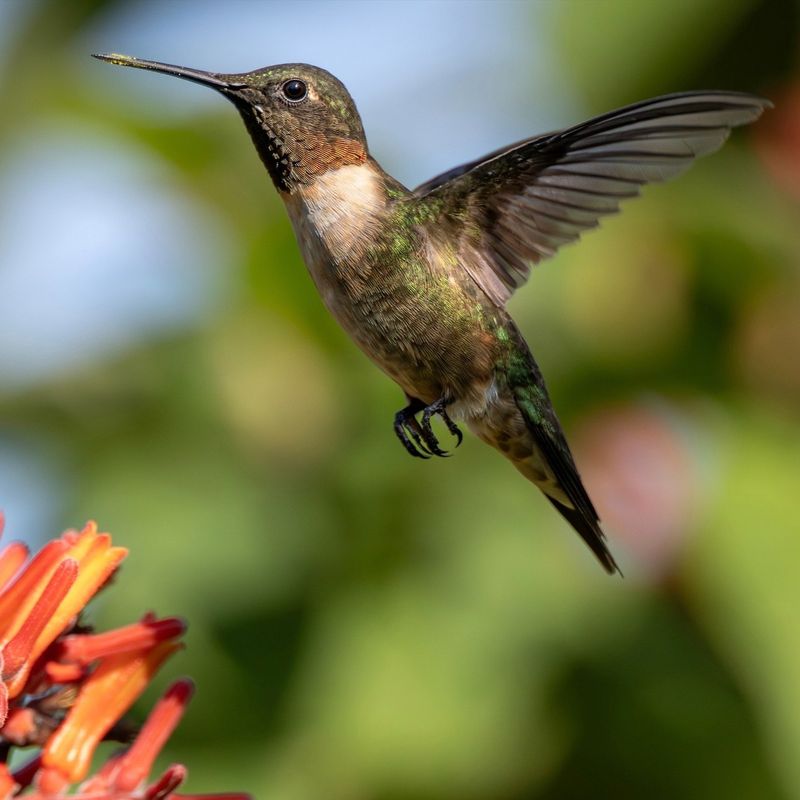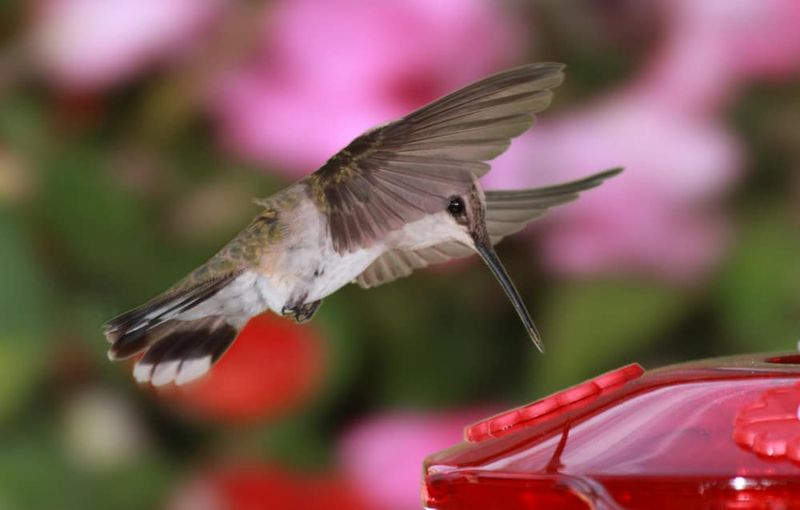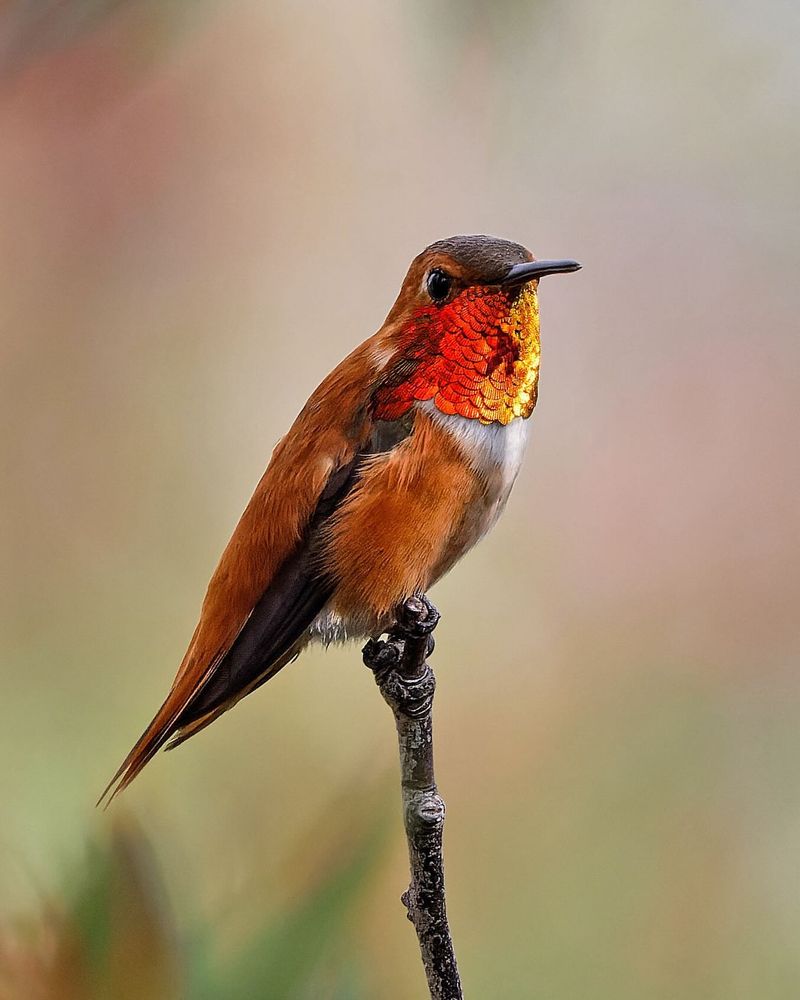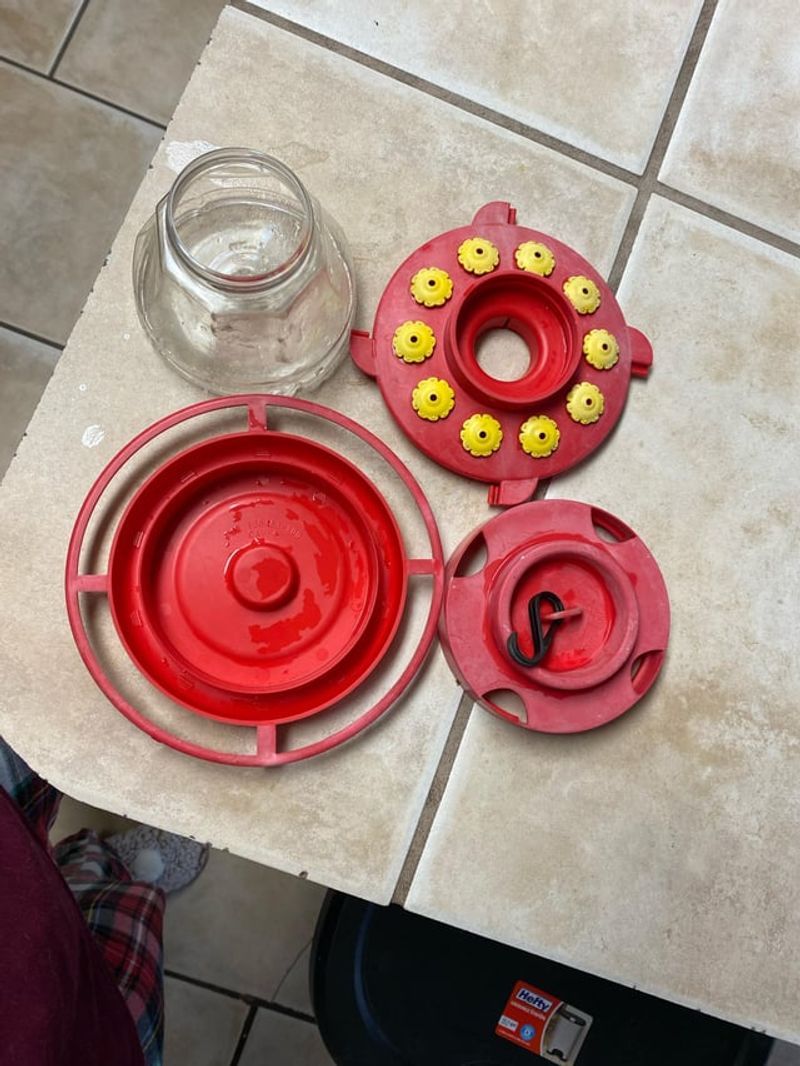Just when you think the flutter and flash around your porch are gone for the season, a few late travelers might still be sipping their last drops of sugar water.
In Tennessee, the timing of when you take down your hummingbird feeders isn’t just about cleaning up — it’s about giving these tiny jet-setters a safe sendoff before they chase the sun south.
1. Ruby-Throated Hummingbirds Migrate Through Tennessee In Fall
Tennessee sits right in the middle of a major migration route for ruby-throated hummingbirds heading south. Every autumn, countless hummingbirds pass through the state on their way to Mexico and Central America.
Your feeders become vital rest stops where these travelers refuel for their long journey. Some birds you see in September and October might not even be local residents but travelers from farther north.
Keeping feeders up during this period provides critical energy sources for exhausted migrants.
2. Wait Until Late October Or Early November
Most experts recommend keeping your feeders up until at least late October in Tennessee. By early November, the majority of migrating hummingbirds have passed through the region.
Weather patterns can shift migration timing slightly each year, so watching for activity is smarter than following a strict calendar date. If you still spot hummingbirds visiting in early November, leave feeders up a bit longer.
Waiting an extra week or two won’t hurt and could save a straggler’s life.
3. Leaving Feeders Up Won’t Delay Migration
A common myth suggests that leaving feeders up too long will confuse hummingbirds and delay their migration. Science proves this completely wrong.
Hummingbirds migrate based on instinct and changes in daylight, not feeder availability. Hormonal changes and shorter days trigger their journey south, regardless of food sources.
Keeping feeders available actually helps late migrants and stragglers who desperately need fuel. You’re providing a safety net, not creating a problem, so don’t worry about interfering with natural behavior.
4. Watch For Straggler Activity Before Removing Feeders
Before packing away your feeders, spend a few days observing activity levels. Stragglers sometimes appear later than expected, especially young birds making their first migration.
If you notice any hummingbirds still visiting, keep at least one feeder filled and available. Once you go three to five days without seeing any visitors, it’s probably safe to take feeders down.
Being patient ensures you don’t accidentally remove a lifeline for a late traveler who needs those extra calories.
5. Rufous And Other Western Species Sometimes Appear
While ruby-throated hummingbirds dominate Tennessee, rufous and other western species occasionally wander into the state during fall and winter. Rufous hummingbirds have been documented spending entire winters in Tennessee when feeders remain available.
Leaving one feeder up year-round, especially in milder regions, can support these rare visitors. Check your feeder weekly during winter months for unexpected guests.
Reporting unusual sightings to local birding groups helps scientists track changing migration patterns and range expansions.
6. Clean Feeders Thoroughly Before Storage
Once you’ve confirmed all hummingbirds have departed, cleaning your feeders properly protects next season’s visitors. Mold, bacteria, and sugar residue can build up inside feeders over time.
Use hot water and a bottle brush to scrub all parts, then sanitize with a diluted bleach solution or vinegar. Rinse thoroughly and let everything dry completely before storing in a cool, dry place.
Proper maintenance ensures your feeders stay safe and functional for many seasons ahead.
7. Plan To Rehang Feeders by Mid-March
Spring arrives early in Tennessee, and ruby-throated hummingbirds typically return by mid-March or early April. Male hummingbirds arrive first to claim territories, followed by females a week or two later.
Having feeders ready when the first scouts appear gives them immediate food sources after their exhausting northward journey. Mark your calendar for mid-March to clean and refill feeders.
Early preparation welcomes back these amazing birds and starts your feeding season off right with healthy, happy visitors.

